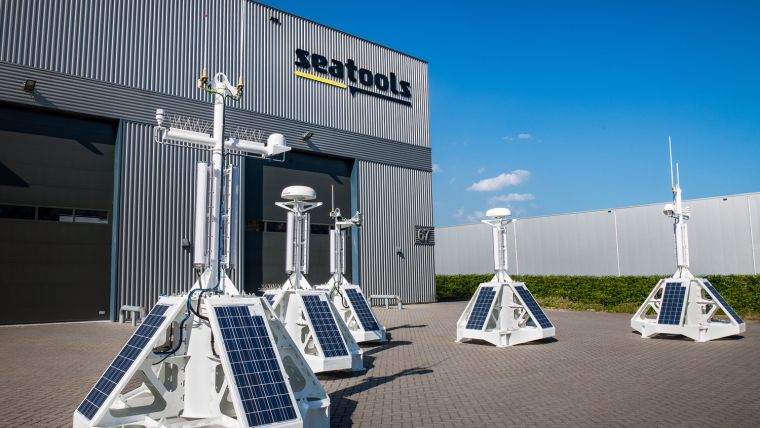Remote Monitoring System for The Ocean Cleanup Delivered
On behalf of The Ocean Cleanup, subsea technology company Seatools completed the development, manufacturing, and testing of a remote offshore monitoring system. The monitoring system is currently integrated into the first-ever ocean cleanup system at The Ocean Cleanup’s assembly yard in Alameda, California, USA.
In the third quarter of 2018, The Ocean Cleanup’s system will be deployed into the waters between Hawaii and San Francisco. The primary goal of the Pacific trials is to confirm the performance of the cleanup system in a fully operational configuration, before commencing large-scale cleaning plans in the Great Pacific Garbage Patch.
During the upcoming trials, Seatools’ remote monitoring system plays a crucial role. Beyond performing critical functions such as navigation, the remote monitoring system provides detailed feedback on the performance of this first cleanup system. Performance data will be used to determine cleaning efficiency and optimise the design of subsequent cleanup systems.
The monitoring system processes, stores, and transfers large amounts of data collected by scores of sensors. This data relates to navigation, environmental conditions, the system’s operational status, and its integrity. The sensors are linked to five solar-powered electronic pods, which will be mounted on the barrier. The pods communicate with each other via a Wi-Fi mesh network and satellite connection, enabling The Ocean Cleanup to monitor its system remotely and retrieve data in real-time (including images and GPS locations) from its headquarters in Rotterdam, the Netherlands.
Seatools performed an extensive engineering trajectory on behalf of The Ocean Cleanup. Conscientious structural engineering of the pods and power management are exemplary of this process. The pods, which will be subject to oceanic circumstances like storms, will have to endure severe load conditions. Considering the remote location of the system, matching a minimal power supply generated by solar panels, with significant power consumption needs for the large number of sensors and data communication presented another challenge. An intelligent control system was developed to meet this requirement and ensures that vital functions, such as those related to navigation, remain intact under all circumstances.














